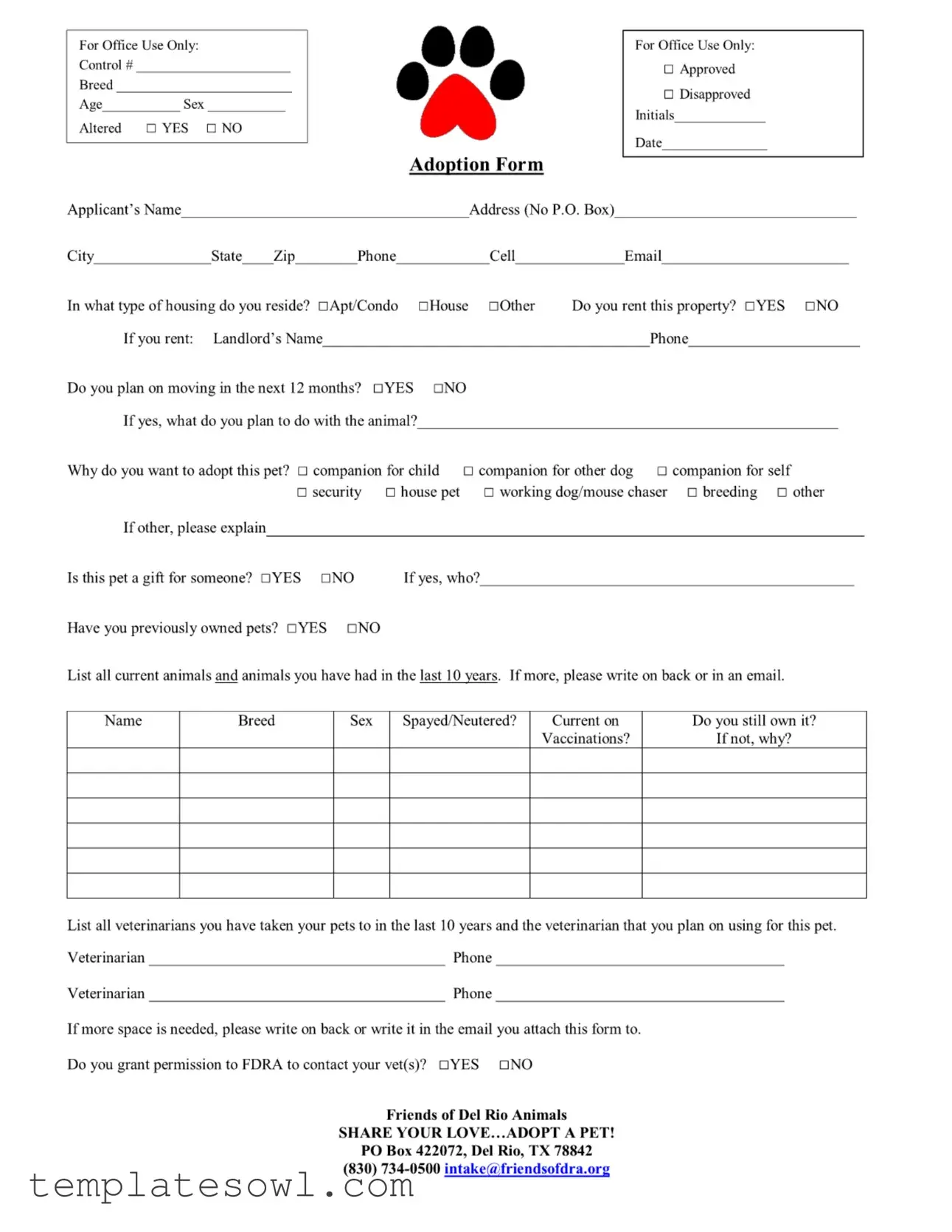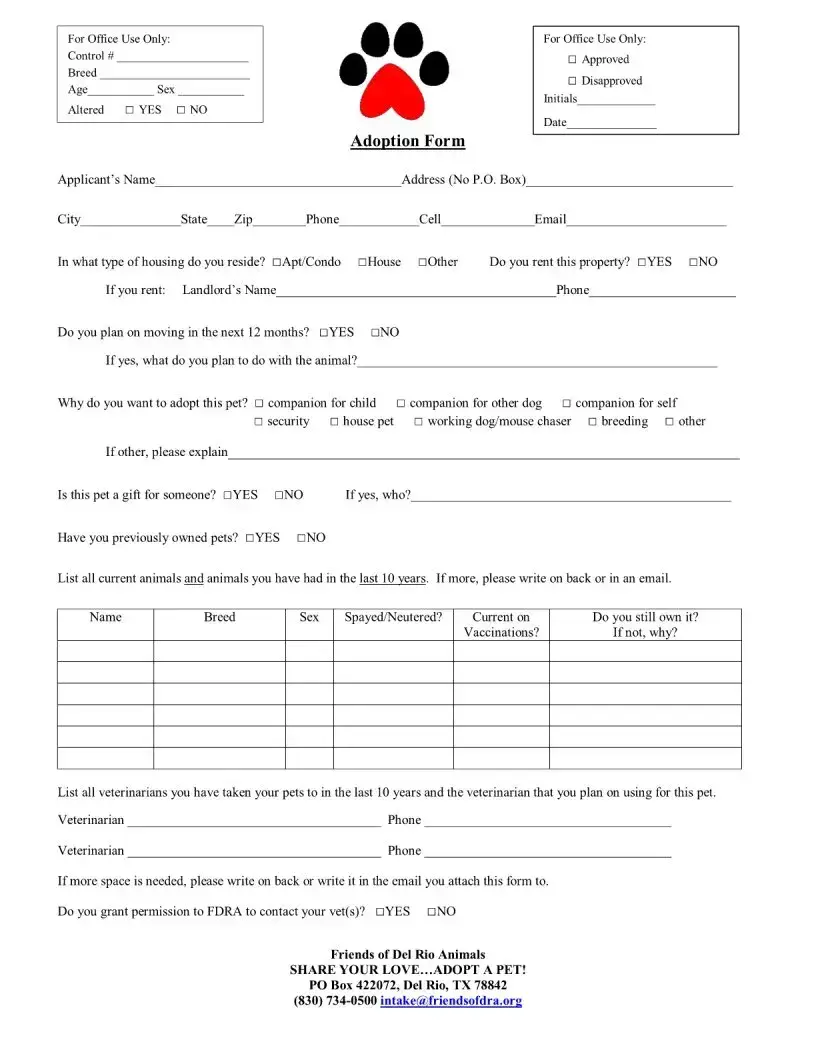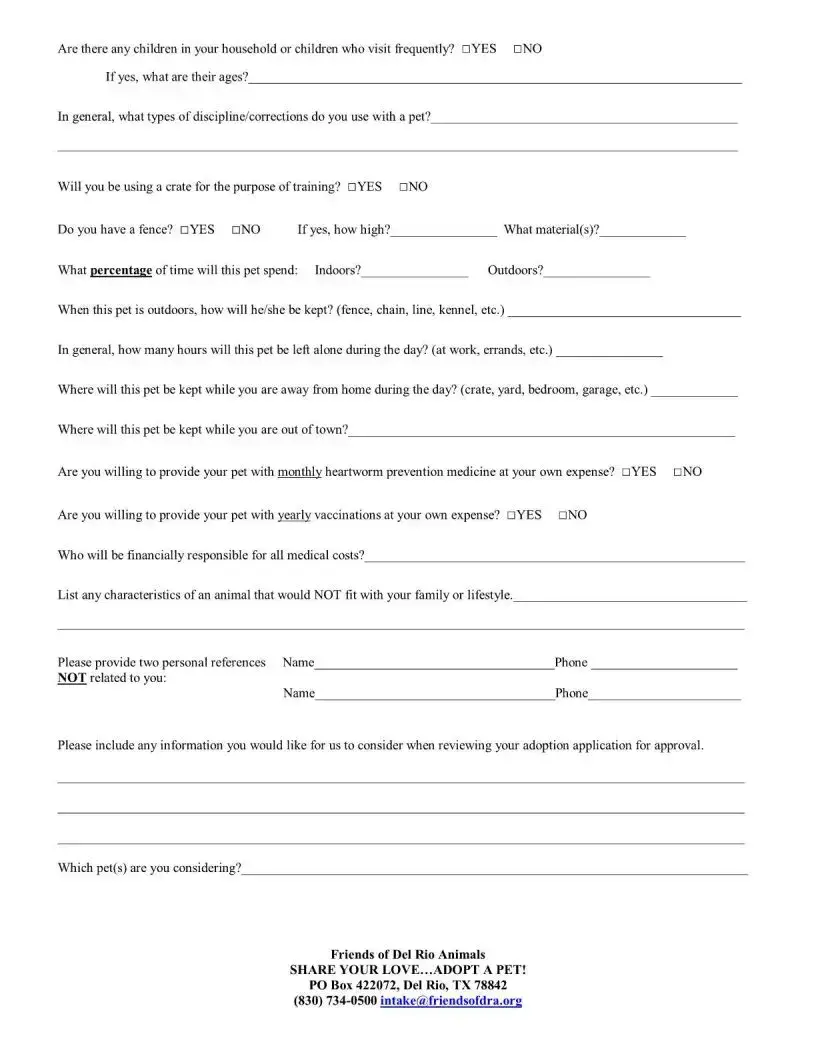What is the purpose of the Dog Adoption Application form?
The Dog Adoption Application form helps assess prospective adopters for compatibility with the animals available for adoption. By gathering personal information, potential living conditions, and past pet experiences, the organization can ensure a good match for both the pet and the adopter.
How do I fill out the application if I have multiple pets?
If you have had multiple pets in the past or currently own several, please list all animals on the application. There’s space provided to include extra details on the back of the form or in an email attached to your submission. Be thorough, as this helps in evaluating your experience as a pet owner.
What should I do if I do not own my home?
If you rent, you will need to provide your landlord's contact information on the application. It’s important to verify with your landlord that pets are allowed in your residence. The organization may contact your landlord to confirm this information.
Can I adopt a dog as a gift for someone else?
Yes, you can adopt a dog as a gift. If this is the case, indicate on the application that it is for someone else, and provide their name. Understanding the recipient's lifestyle and preferences is essential to ensure the adoption is successful.
What will happen if my application is approved?
If your application is approved, you will be contacted by the organization to complete the next steps in the adoption process. This may include a meet-and-greet with the dog you are interested in, finalizing any paperwork, and discussing adoption fees and responsibilities.
How will my pet be cared for while I’m away from home during the day?
The application asks where the dog will be kept during your absence. Be honest about your plans. Whether you intend to use a crate, keep them in the yard, or another space, your answers help assess if your plans align with the dog's needs.
What kind of financial commitment am I making when adopting a dog?
As an adopter, you are financially responsible for all expenses related to your new pet. This includes food, medical care, vaccinations, and preventative treatments. Be prepared for this ongoing commitment as part of responsible pet ownership.


